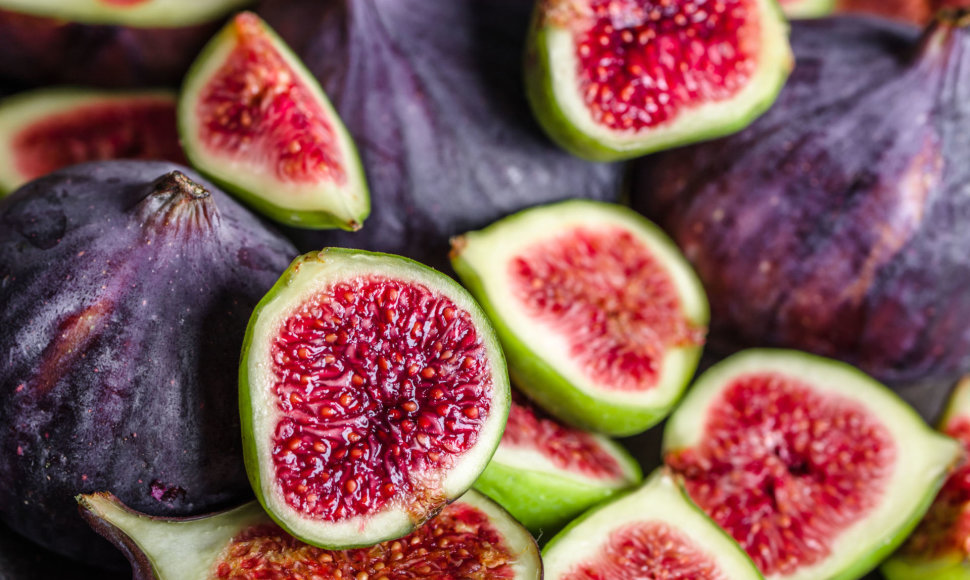“Contemporary capacities allow to taste even things grown in the most distant corners of the world. We notice that our customers are increasingly including exotic fruits such as lychees, annonas, figs, passion fruits and tamarillos into their shopping carts and the selection of fruits arriving from distant countries is truly broad – more than thirty kinds. That said, some of them can only be found during specific seasons and the greatest harvest of them can be found in our stores in autumn and winter,” Maxima head of commerce Vilma Drulienė says.
2019 can be viewed as a peak year for exotic fruits, with their demand rising more than double. The sales of certain exotic fruit grew by multiples, for example in 2019, buyers purchased 2.5 times more figs than in 2018, while through the same period, four times more annonas were sold.
“Exotic fruits are excellent when seeking to provide variety for traditional dishes or for those longing for new flavours – they can be used to improve the flavour of deserts, make sauces or eat on their own. Also, fruits arriving from distant countries are notable not only for their subtle flavour, but also for the amount of vitamins and minerals they hold,” Maxima Food Production Department director Brigita Baratinskaitė says.
Refreshing flavours lie hidden behind unfamiliar names
Lychees are notable for their sweet and sour flavour, while its edible part is a translucent pulp found beneath a spiky peel, while at the core you find a large inedible seed. The fruit contains ample plant origin protein, pectin, potassium, magnesium and vitamin C. It is suited for including in salads, yogurts and ice cream.
Rambutans look like little hedgehogs – round and spiky. When you peel a rambutan, its edible part is a pale jelly-like pulp. Its flavour is both sweet and refreshing. The fruits are eaten fresh, included in salads and desserts.
Tamarillos look similar to tomatoes and peppers, while the fruit’s flavour is akin to a sweet and sour tomato and passion fruit. Tamarillos are used both for deserts or as garnish and are typically served cooked – jams and sauces are made out of them. The fruit’s skin is bitter, thus only the pulp should be used for cooking and eating.
Annonas are a bountiful source of the vitamins C, B1 and B2, as well as numerous minerals. The pulp found within the fruit is reminiscent of a banana, while the flavour is akin to a tomato and a lemon. The seeds and skin are inedible, while the pulp is best extracted with a spoon. THe fruit is best suited to eat when it is a little soft.
Figs are a source of iron and calcium and can be found in our stores around the year. The sweet fruit is eaten by cutting it in half, similarly to a kiwi.
Passion fruits are known to many as a dessert ingredient. The many little seeds found within are tasted on their own or used as part of cocktails, sallads and desserts. Whether the fruit is suitable for eating and well ripened is something revealed by its husk – it should be rough.
“Exotic fruits reach our store shelves typically from Thailand, Columbia, Brazil, Israel and Vietnam. We noted that some flavours from distant countries are adopted faster by customers, while others require more time, such as for example garcinias. These fruits are included in the top ten tastiest fruits in the world. Their flavour is similar to a cocktail of strawberries, pears and oranges, however our customers only sample them with caution,” V. Drulienė says.
About Maxima
The strengths of the traditional Lithuanian retail network Maxima are its small prices and wide, particularly Lithuanian goods, selection. The network managing company Maxima LT is the largest Lithuanian capital company, one of the largest tax payers and the largest employer in the country. Currently, there are almost 250 Maxima stores operating across Lithuania, employing around 15 thousand employees and visited every day by more than 550 thousand customers.












